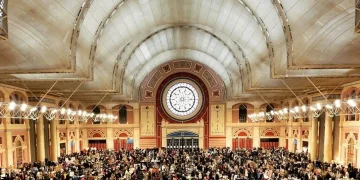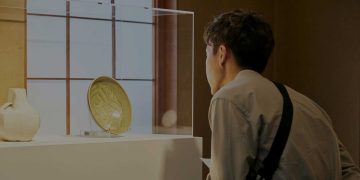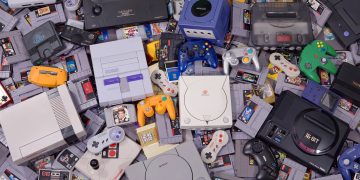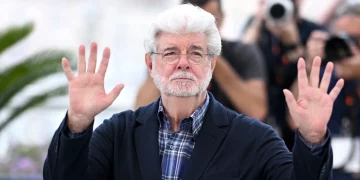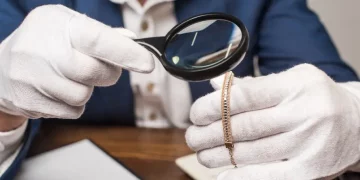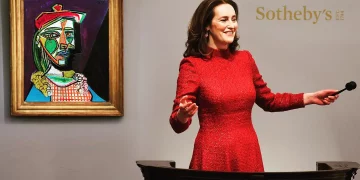The world of collectibles is constantly evolving, driven by shifts in tastes, technological advancements, and economic factors. Auctions, in particular, have long been the focal point for high-stakes deals and record-breaking sales. As we look ahead, many wonder whether upcoming auctions will lead to significant changes in the collectibles market. With increasingly valuable items, new categories of collectibles emerging, and the influence of technology reshaping the bidding process, future auctions are poised to have a substantial impact on the market.
In this article, we will explore the various factors that could drive major transformations in the collectibles industry and how these upcoming auctions may signal a new era for collectors, investors, and auction houses alike.
1. The Influence of Technology: Online Auctions and Blockchain Integration
The integration of technology into the auction world has already begun, and it shows no signs of slowing down. Online auctions, virtual bidding, and blockchain integration are transforming how collectors participate in the market, especially for rare or high-value items. As technology becomes more ingrained in auction practices, it could fundamentally shift the way collectibles are bought, sold, and valued.
Online Auctions: Online auction platforms have already gained significant traction in recent years, with many auction houses offering live streaming or entirely online bidding systems. The accessibility of online auctions has allowed a broader pool of collectors and investors from around the globe to participate in auctions that were once limited to in-person attendees.
Impact:
- Global Reach: Online auctions break down geographic barriers, enabling people from different parts of the world to compete for items without the need for travel. This can lead to a more competitive market, with higher demand and higher bids for rare items.
- New Collectors: The ease of accessing online auctions has drawn in a younger generation of collectors, making the market more dynamic and diverse.
Blockchain and Digital Collectibles: Blockchain technology is gaining traction as a method for verifying the authenticity and provenance of collectibles. This is especially relevant for digital assets such as NFTs (Non-Fungible Tokens), which are rapidly becoming a new category within the collectibles market. These digital assets are expected to play a bigger role in future auctions, as they offer a new way of owning and trading rare digital items, like art, music, and even virtual real estate.
Impact:
- Security and Transparency: Blockchain can help guarantee the authenticity and ownership of physical and digital collectibles, reducing the risk of fraud and increasing trust in the market.
- New Forms of Collecting: The rise of digital collectibles and NFTs may redefine what constitutes a collectible, expanding the auction world to include a whole new realm of virtual assets.
2. Shifting Consumer Preferences: A New Focus on Emerging Categories
As the market matures, the types of collectibles in demand are continuously changing. While traditional categories such as fine art, vintage cars, and luxury watches remain popular, the market is witnessing the rise of new categories that could make significant waves in upcoming auctions. Emerging trends and shifts in consumer preferences could prompt a major shift in the types of items that dominate the auction block.
Emerging Categories:
- Pop Culture Memorabilia: Items from pop culture, especially those related to films, music, and video games, are becoming increasingly popular. With the rise of fandoms and cult followings, items associated with beloved movies, shows, and celebrities are seeing unprecedented demand. The next big auction could feature rare items from franchises like Star Wars, Harry Potter, or even obscure 1990s cartoons, which could break records.
- Streetwear and Sneakers: Another emerging category is the growing interest in high-end streetwear and limited-edition sneakers. Brands like Supreme, Off-White, and Nike’s collaboration with designer Virgil Abloh have created a buzz in the fashion and collectibles world, with certain items fetching prices similar to fine art.
Impact:
- Cultural Shifts: As newer generations of collectors take over the market, the definition of “valuable” may shift to reflect the interests and tastes of a younger demographic. The growing importance of pop culture and digital assets in the collectibles space could lead to a more diverse and dynamic market.
- Increased Diversification: Auction houses will likely respond to these changes by expanding their offerings to cater to new and emerging categories, potentially altering the market’s landscape by drawing in a more diverse range of bidders and collectors.
3. High-End Investments: Will Collectibles Become the Next “Alternative Asset Class”?
In recent years, collectibles have increasingly been viewed not just as objects of passion but as serious investments. Fine art, rare cars, and vintage watches have long been staples of the high-net-worth individual’s portfolio, but newer sectors are now gaining attention as potential alternative assets. Auctions could see a massive influx of investment capital, turning collectibles into one of the most sought-after asset classes, alongside traditional investments like stocks and real estate.
Luxury Assets as Investment Vehicles: As traditional markets fluctuate, collectors are increasingly turning to rare collectibles as a way to hedge against inflation, diversify their portfolios, and build long-term wealth. Some auction houses have begun marketing high-value items as alternative investments, with the potential to appreciate over time. The idea of collectibles as an investment vehicle is not new, but it is gaining more mainstream attention.
Impact:
- Increased Market Volatility: With more institutional investors and hedge funds entering the market, the dynamics of the auction world could change, creating both new opportunities and potential volatility. High-value auctions could see bidding wars fueled by investors rather than passionate collectors, driving prices to new heights.
- Long-Term Value: As more people recognize the investment potential of collectibles, certain items will likely see substantial appreciation, and their historical significance may become more central to their value proposition.
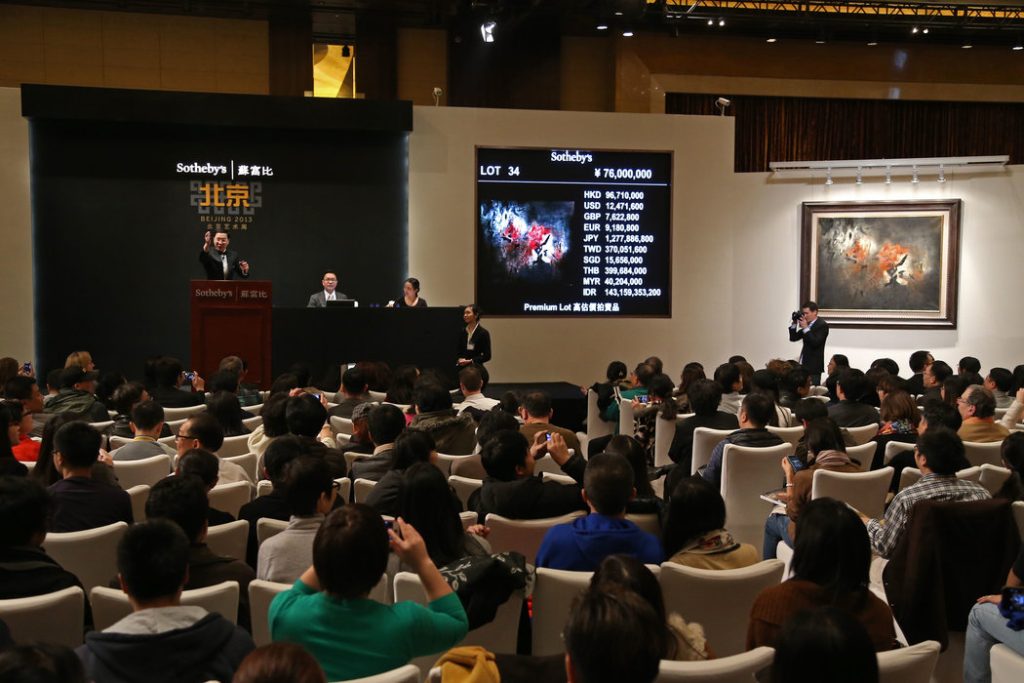
4. Sustainability and Ethical Considerations: A New Wave of Conscious Collecting?
As the global conversation shifts toward sustainability and ethical consumption, the collectibles market may experience significant changes. Increasingly, consumers are becoming aware of the environmental and social impact of their purchases, and this consciousness could spill over into the world of rare collectibles. Items associated with ethically questionable sourcing or production may see decreased demand, while those tied to sustainability, historical preservation, or socially responsible practices could gain prominence.
Sustainable Collecting: For example, vintage items such as furniture, fashion, and jewelry that have been recycled, restored, or upcycled are becoming more popular, as collectors embrace the idea of reusing and preserving objects from the past rather than buying new. In fine art, more collectors are becoming interested in works that address social and environmental issues or are created with sustainable materials.
Impact:
- Market Recalibration: Future auctions may reflect a more conscientious approach to collecting, with an increasing number of items being sold based on their sustainability and ethical considerations. This could influence what types of items are featured and how they are marketed.
- New Collector Priorities: Collectors may increasingly be motivated not just by the financial value of their acquisitions but by the broader impact of their purchases. Auctions may need to adapt to this shift by curating collections with sustainability in mind.
5. Auction Houses Adapting to New Demands: Innovation in the Bidding Process
As the collectibles market evolves, auction houses are constantly innovating to stay ahead of trends and meet the changing needs of buyers. The traditional auction model — where bidders gather in person or over the phone — is being supplemented with new technologies, marketing strategies, and customer service innovations to keep up with the times. Future auctions may feature entirely new ways of engaging with buyers, allowing for more dynamic and interactive bidding experiences.
Innovative Approaches:
- Hybrid Auctions: Some auction houses are experimenting with hybrid models, where online and in-person bidding take place simultaneously. This allows them to capture a wider audience, ensuring that more people can participate in real time, regardless of location.
- Augmented Reality (AR) and Virtual Reality (VR): As technology advances, auction houses are exploring ways to incorporate AR and VR to create more immersive experiences for collectors. This could allow potential buyers to view items in 3D or virtually “try them on” before committing to a bid.
Impact:
- Enhanced Engagement: With new technologies, auctions will likely become more interactive and engaging, enabling collectors to experience items in new ways. This could lead to increased competition and potentially higher prices for coveted items.
- Wider Audience: By reaching new demographics and expanding accessibility, auction houses could attract a new generation of collectors, making the market even more dynamic and diverse.
Conclusion: The Future of Auctions and the Collectibles Market
Looking ahead, it is clear that future auctions are set to play a key role in shaping the direction of the collectibles market. The integration of technology, the rise of new categories, the growing appeal of collectibles as an investment, and evolving consumer preferences are all factors that will likely create major changes in the way the market operates.
Whether you are a seasoned collector or a newcomer, the future of auctions promises to be an exciting time of growth and transformation. As the market shifts, one thing is certain: upcoming auctions will not just reflect the current state of the collectibles industry but will likely set the stage for the next big wave of change in this ever-evolving space.













